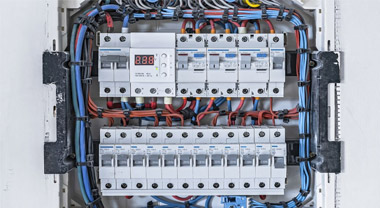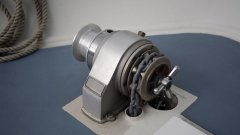Preventive test methods for high-voltage circuit breakers
In order to correctly judge the status of high-voltage circuit breakers through preventive test data analysis, simple, safe and effective test methods are used to provide a basis for the state maintenance of circuit breakers. The following introduces several commonly used preventive test analysis methods in order to make judgments on the insulation characteristics, mechanical characteristics and contact wear of the circuit breaker.
1. Measurement of resistance of conductive loop
Conductive loop resistance test is a common test for circuit breakers to judge whether the contacts are in good contact, and it is also the main item of circuit breaker preventive tests. The measurement method is to add a current greater than 100A in the closed state of the circuit breaker, and obtain the resistance by measuring the voltage at both ends. With the use of enclosed busbars and GIS, it is difficult for testers to measure near the circuit breaker, and they often have to bring long busbars or pass grounding switches. In addition, different test personnel may use different places to measure the voltage, which makes the test data often unable to reflect the status of the equipment. The test personnel should understand the position of the voltage measured in the last test before doing the resistance test of the conductive loop, and make sure that the grounding switch is in good contact with the grounding switch. When obtaining the test data, record the temperature at the time of measurement and convert the test data to the standard resistance under 75 degrees. Only in this way can the measured data be compared with the previous data, and it is more effective to judge whether the contact is good. When the value difference exceeds the specified value, the reason should be analyzed or maintenance should be arranged to eliminate the hidden danger of the equipment.
2. Measurement of circuit breaker opening and closing time parameters
The opening and closing time parameter of the circuit breaker is the primary indicator of the operating performance of the circuit breaker. Circuit breakers of different manufacturers have different opening and closing times, but they all require rapid action. Time parameters include closing time, opening test and different periods of time. The opening time of the circuit breaker includes two parts, the inherent opening time and the arc extinguishing time, so it is also called the full opening time. In order to ensure that the data obtained can be reliably used for analysis and judgment, it should be ensured that the voltage applied in the test is the standard power supply, the action circuit is the same as the previous test, and the energy storage mechanism is at the same level during the test. When analyzing the data, it is necessary to judge the change trend of the time parameter in combination with the previous test data. Through the analysis of the test data, it can be effectively judged whether the mechanical structure of the circuit breaker is loose, deformed and worn, whether the energy storage mechanism is normal, and whether the energy storage spring has defects such as stress deformation.
It is particularly pointed out that when measuring the opening and closing time of a three-phase linkage high-voltage circuit breaker on site, the test wiring should be connected to the connection terminal of the relay protection opening and closing operation, and avoid wiring directly at the opening and closing coil of the circuit breaker Carry out the test, otherwise it is difficult to find the problem of excessive opening and closing time, which will affect the safe and stable operation of the power grid in field applications. When used for the lead time measurement of the synchronization device, the closing voltage should also be added to the monitoring system closing relay terminal, so as to ensure that the measurement time is accurate and reliable.
3. Measurement of the operating voltage of the opening and closing electromagnet of the circuit breaker
The measurement of the operating voltage of the circuit breaker operating mechanism is an important part of the circuit breaker characteristic test. In addition to verifying whether the circuit breaker coil is sensitive and reliable, it can also test the performance of the entire operating mechanism under non-rated operating voltage. According to the regulations, when the operating mechanism's voltage should be kept within 80%~110% of the rated voltage range, the circuit breaker should be able to close reliably. When the voltage of the operating mechanism should be kept within the range of 65% to 120% of the rated voltage, the circuit breaker should be able to open reliably. When the coil voltage is lower than 30% of the rated voltage, the circuit breaker should reliably refuse to operate.
The action of the circuit breaker mainly depends on the action of the opening and closing coil. When the secondary DC system has poor insulation and high-resistance grounding, induced low-voltage DC voltage will be generated at both ends of the opening and closing coils of the circuit breaker, and the circuit breaker works in a strong current environment, which will easily cause strong electromagnetic interference. If the operating voltage is too low, the circuit breaker will open by mistake, so the regulations stipulate that the circuit breaker shall not operate when the rated voltage is lower than 30%. In the event of an accident in the power system, in order to ensure that the circuit breaker can operate reliably and prevent the power system from losing protection due to the failure of the circuit breaker, it is stipulated that the voltage of the operating mechanism should be maintained within the range of 65% to 120% of the rated voltage. When inside, the circuit breaker should be able to open reliably.
Through the circuit breaker operating voltage test, we can find that the core of the DC electromagnet is jammed, the working gap of the DC electromagnet is too large, and the coil turns short circuits. Pay special attention to the fact that many circuit breakers directly measure the operating voltage of the opening and closing electromagnets. The value is often much lower than the specified voltage value. This is because the equipment manufacturer uses a voltage divider resistor in the circuit when configuring the electromagnet. Therefore, in this case, the operating voltage of the opening and closing electromagnets cannot be measured directly, but the voltage divider resistance should be measured together to ensure the accuracy of the test data.
4. Dynamic resistance test
The circuit breaker contacts are composed of main contacts and arc contacts. When closing, the arc contact is closed first and then the main contact is closed; when opening, the main contact is first separated and then the contact is extinguished. During the opening and closing process of the circuit breaker, the main circuit resistance changes, and the arc contact protects the main contact from arc ablation and wear. In order to check the degree of wear of the arc contact, we use dynamic resistance to test the resistance change during the opening process, because the sudden change in resistance from infinity to arc contact resistance during closing is difficult to measure, and the instantaneous DC current when the arc contact is just closed Generate harmful noise and do not use measurement.
When the circuit breaker is opened, the current on the main contact is transferred to the arc contact after the main contact is separated, and this time is the node. The time from when the arc contact is separated is defined as "arc contact contact time". The contact time of the arc contact corresponds to the degree of ablation and wear of the arc contact. As the degree of wear intensifies, the arc contact becomes shorter and shorter, and the contact time of the arc contact shortens. If the arc contact wears too much, the current cannot be effectively transferred to the arc contact after the main contact is separated, and the generated arc will directly ablate the main contact, causing damage to the main contact or even an accident. It can be seen that the dynamic resistance test is to obtain the contact time of the arc contact by measuring the change of the resistance of the conductive loop, and to evaluate the ablation and wear degree of the arc contact.
For circuit breakers that frequently cut off large current circuits, especially the outlet circuit breakers of pumped storage units, the degree of ablation and wear of the arc contacts is the main criterion for state maintenance. It is recommended to measure it once a year.
5. Closing resistance test
Closing resistors are designed and installed to suppress the operating overvoltage generated during the reclosing of high-voltage circuit breakers. When the circuit breaker receives the closing order, the closing resistor is turned on in advance and the circuit is turned on. In about 10ms, the main contact of the circuit breaker is closed, the closing resistors are separated from use, and the circuit breaker is closed. If the closing resistance is damaged, the main contact of the circuit breaker will be closed directly, which will cause the operating overvoltage generated when the circuit breaker is reclosing, which will damage the safety of equipment operation.
The current commonly used measurement method is to add a voltage source and resistance at both ends of the circuit breaker, record the change of the measured voltage during the closing process through a wave recorder, and directly calculate the resistance value of the closing resistance through data analysis software. Judge the operating status of the short-circuiter closing resistance, and check whether the closing resistance resistance and the input time meet the design requirements.




